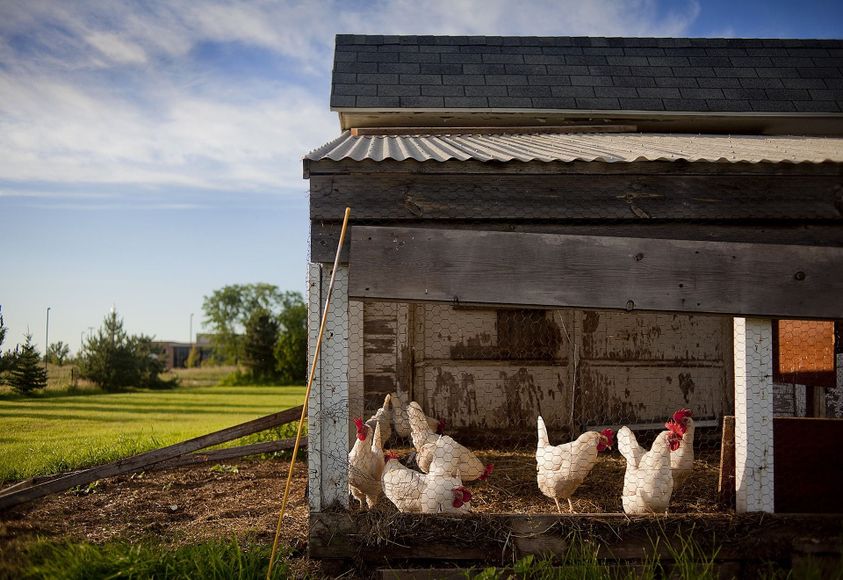Raising chickens in your backyard or on your property is a great way to ensure you have fresh eggs every day. Not to mention your yard will have fewer bugs and ticks. If this sounds like something you would want then you may have already researched places to get some chicks. While they’re young, a cardboard box with a heat lamp in your home will suffice, but by the time they’re six weeks old, they’ll need more substantial housing to keep them warm, dry and safe from predators. With some basic carpentry skills and a few tools, you can finish the project in a weekend.
Choose a Spot
Deciding on a spot for your coop is step one. Chickens don’t like the heat and will need shade during the hottest part of the day. Keep this in mind when you’re choosing a spot on your property or yard. One good location for a coop can be under a large deciduous tree where they will be able to keep cool in the summer afternoons and can bask in the sun during winter months when the leaves have fallen. It’s also a good idea to choose somewhere that can be easily accessed from your house. You will be visiting the coop routinely in order to refill their food and water, collect eggs and generally check up on them.
Size and Elevation
The general rule of thumb is that you need two to three square feet inside the coop for each bird and four to five square feet per bird in the run which is the fenced in area surrounding the coop. Depending on the breed of your chicken and how large they are, you may need to add more space. When in doubt it’s always best to have more space than not enough. Just like humans, chickens are prone to squabbling when they are in tight quarters for too long. A raised coop is more secure than one on the ground – it will prevent most predators from digging and burrowing underneath. Most coops are raised about one foot from the ground. This height will not only keep your chickens safe from predators but also provide additional shelter from the sun in the summer and any snow or sleet come winter.
Build the Frame
Now it’s time to build the frame of your coop. You can Google and find all kinds of plans and materials to use, but if you’re looking to save some money, simple 2x4’s work just fine. Woods such as cedar, redwood and cypress are recommended as they won’t rot as easily as others. Start by constructing a rectangular frame and cover it with plywood. You can also use plywood for the roof, or if you prefer, you can use a slab of tin for a tin roof. A chicken coop should be well ventilated and receive good air flow, so be sure to leave or drill a few small holes near the ceiling.
Next, construct a door for you and your chickens. This can easily be made from plywood and framed with 1x2’s. Add a latch that locks to keep predators out. Frame out your run outside the coop with 2x4’s and attach it to the wall of the coop. Use a piece of plywood to make a ramp for the chickens from the run into the coop. Don’t forget to wrap the run in chicken wire to keep it safe for them.
Equip the Inside
Begin with the flooring. Dirt floors can be easily breached by predators and wood floors can house mites and parasites. Instead, use a sheet of plywood and cover it with straw for easy cleanup. Using 2x2’s, build a roosting bar that runs along a wall and is a few feet above the ground. Chickens will always seek the highest point to sleep. Each bird requires around eight to 10 inches of space so keep that in mind when constructing.
The general rule for building nesting boxes is that you need one square foot box for every three birds. Ensure the boxes are lower than the roosting bar so your chickens won’t perch on them. Fill the boxes with straw to ensure they have a comfortable place to lay their eggs. If you’ll be running electricity to the coop, install the wiring and bulb, which will keep chickens warm in winter and help during nesting.
Inspect your newly built coop for any holes and cracks that a predator could enter. If you find any, plug them up with metal chicken wire. You can now introduce your chickens to their new home! After about six months with proper feeding and care, you will start reaping the benefits – eggs!







